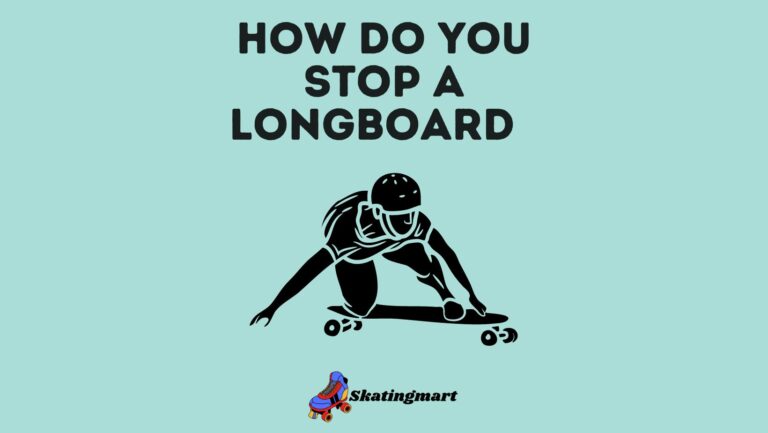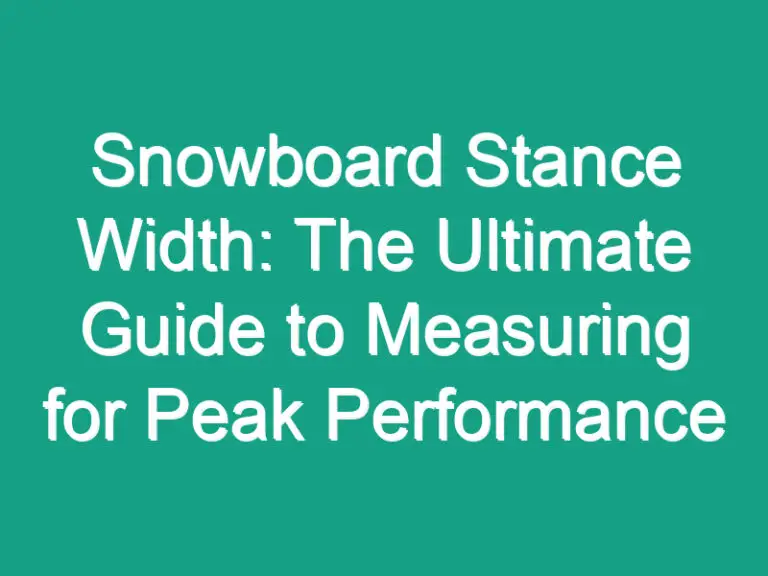
Roller skiing is exhilarating, but knowing how to stop safely is crucial for every skier. In this article, I’ll share essential tips on mastering the art of stopping on roller skis. From beginners to seasoned skiers, stopping effectively is a skill that can enhance your roller skiing experience.
Whether you’re a newbie or looking to refine your technique, stopping on roller skis requires proper form and control. I’ll guide you through step-by-step instructions and expert advice to help you stop confidently and smoothly. Stay tuned to discover the key strategies that will make stopping on roller skis a breeze.
Key Takeaways
- Roller ski brakes are essential for safe stops, with brake pad condition and tension adjustment being critical factors.
- Master the snowplow technique by practicing in a flat area, applying pressure to the inside edges of skis, and gradually stopping.
- Incorporating the parallel turn technique helps smoothly transition from snowplow to turning both skis in the same direction.
- Practice speed control through techniques like snowplow, proper body positioning, and gradual braking for safe and effective stops.
Understanding Roller Ski Brakes
When it comes to roller skiing, roller ski brakes play a crucial role in ensuring a safe and controlled stop. These brakes are designed to mimic the braking mechanism of traditional skis, allowing skiers to slow down and stop when needed.
One of the key components of roller ski brakes is the brake pad. This pad is pressed against the wheel to create friction, slowing down the roller ski. It’s essential to regularly check the condition of your brake pads to ensure optimal performance and safety.
Adjusting the brake tension is another important aspect to consider. The brake tension determines how quickly the brake engages when you press the brake lever. Finding the right balance in brake tension can help you achieve a smooth and efficient stop.
It’s crucial to practice using your roller ski brakes in a safe environment before hitting more challenging terrains. Familiarizing yourself with how the brakes respond and mastering the technique of applying pressure gradually will give you the confidence to stop effectively during your roller skiing sessions.
Incorporating roller ski brake techniques into your regular training routine can significantly improve your overall roller skiing experience. Remember, mastering the art of using roller ski brakes is key to staying safe and in control on your roller skiing adventures.
Mastering the Snowplow Technique
When it comes to stopping on roller skis, mastering the snowplow technique is key. Here’s how I recommend going about it:
- Start in a flat practice area to get the hang of the technique.
- Position your feet in a V shape with the tips closer together than the heels.
- Bend your knees and apply pressure to the inside edges of the skis to create friction.
- Gradually increase the pressure to control your speed and come to a complete stop.
- Practice, practice, practice to build muscle memory and confidence with this essential stopping technique.
Remember, mastering the snowplow technique takes time and patience, but it’s a crucial skill to have for safe and controlled stops while roller skiing.
Practicing the Parallel Turn
When mastering how to stop on roller skis, the parallel turn technique is another valuable skill to add to your repertoire. This advanced maneuver involves smoothly transitioning from the snowplow to turning both skis in the same direction. Here’s how I approach practicing the parallel turn:
- Find a Gentle Slope: Start on a gentle slope to get a feel for the turning motion without excessive speed.
- Initiate the Turn: Shift your weight slightly in the direction you want to turn while gradually edging both skis in that same direction.
- Maintain Balance: Keep your body centered and knees flexed to maintain balance throughout the turn.
- Practice Consistently: Repetition is key to mastering the parallel turn. Practice regularly to build confidence and fluidity in your movements.
- Gradually Increase Difficulty: As you become more comfortable with the maneuver, challenge yourself on steeper slopes or by initiating the turn at higher speeds.
By incorporating the parallel turn into your roller skiing skill set, you’ll have another effective method to control your speed and maneuver with precision. Keep practicing and honing this technique to enhance your overall roller skiing experience.
Managing Speed Control
When it comes to Managing Speed Control on roller skis, it’s crucial to have a few techniques under your belt. One effective method is the use of the snowplow technique, where you angle your skis into a V-shape to create friction and slow down gradually. Mastering the snowplow is essential for beginners and serves as a strong foundation for more advanced stopping maneuvers.
Additionally, body positioning plays a vital role in speed management. By keeping your knees bent and weight slightly forward, you can enhance stability and control, especially when executing stopping techniques. Remember, proper posture is key to optimizing your stopping power and reducing the risk of falls or accidents.
Another valuable strategy for speed control is gradual braking. Rather than making sudden stops that could lead to loss of balance, focus on applying pressure to your skis progressively to decelerate smoothly. This method not only enhances safety but also allows for a more controlled and confident stopping experience.
Consistent practice of these speed management techniques is essential for improving your skills on roller skis. By honing your ability to execute the snowplow, maintaining optimal body positioning, and mastering gradual braking, you’ll build the foundation for safe and effective stops during your roller skiing adventures.
Conclusion
Mastering the art of stopping on roller skis is a fundamental skill that requires practice and technique. By incorporating the snowplow method and focusing on body positioning, skiers can effectively control their speed and come to a safe stop. Remember, gradual braking and maintaining proper form are key to enhancing stability and control. Consistent practice of these techniques will not only improve your roller skiing abilities but also ensure a safer and more enjoyable experience on the trails. So, keep practicing, stay focused, and soon you’ll be stopping on roller skis with confidence and ease.
Frequently Asked Questions
How important is speed control in roller skiing?
Controlling speed is crucial in roller skiing to ensure safety and avoid accidents. It allows skiers to maintain control, navigate effectively, and stop efficiently.
What is the snowplow technique in roller skiing?
The snowplow technique involves creating friction by angling the ski tips inward to slow down gradually. It is essential for beginners to practice and serves as a foundational move for advanced stopping maneuvers.
Why is body positioning important during stopping in roller skiing?
Proper body positioning, such as bending knees and keeping weight forward, is essential for stability, balance, and control during stopping maneuvers. It helps skiers maintain control and prevent falls.
Why is gradual braking recommended over sudden stops in roller skiing?
Gradual braking is preferred in roller skiing as it allows for smoother deceleration, better control, and reduces the risk of injury or falls. Sudden stops can lead to loss of balance and accidents.
How can consistent practice of stopping techniques improve roller skiing skills?
Regular practice of stopping techniques, including the snowplow and gradual braking, helps skiers enhance their skills, build confidence, and ensure safe and effective stops on roller skis.

Hi, This is Roasalin, I have loved Skating since my early childhood days, and here I share my experiences and tips for beginners who want to turn into pro skaters. I hope you find it useful. you can contact me here






